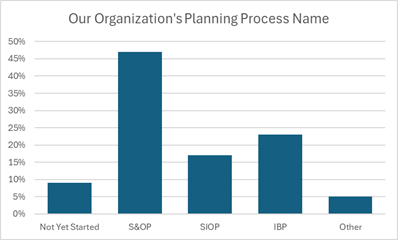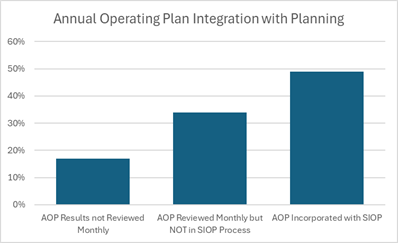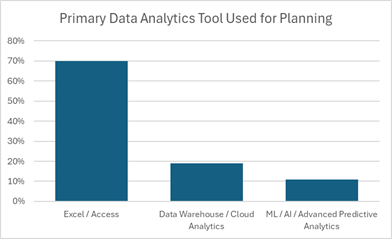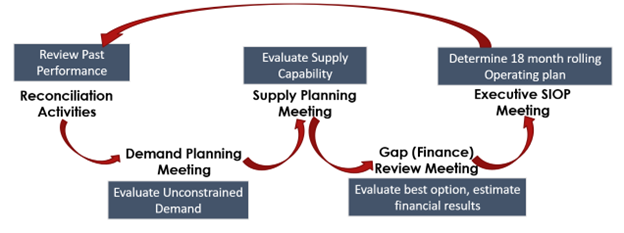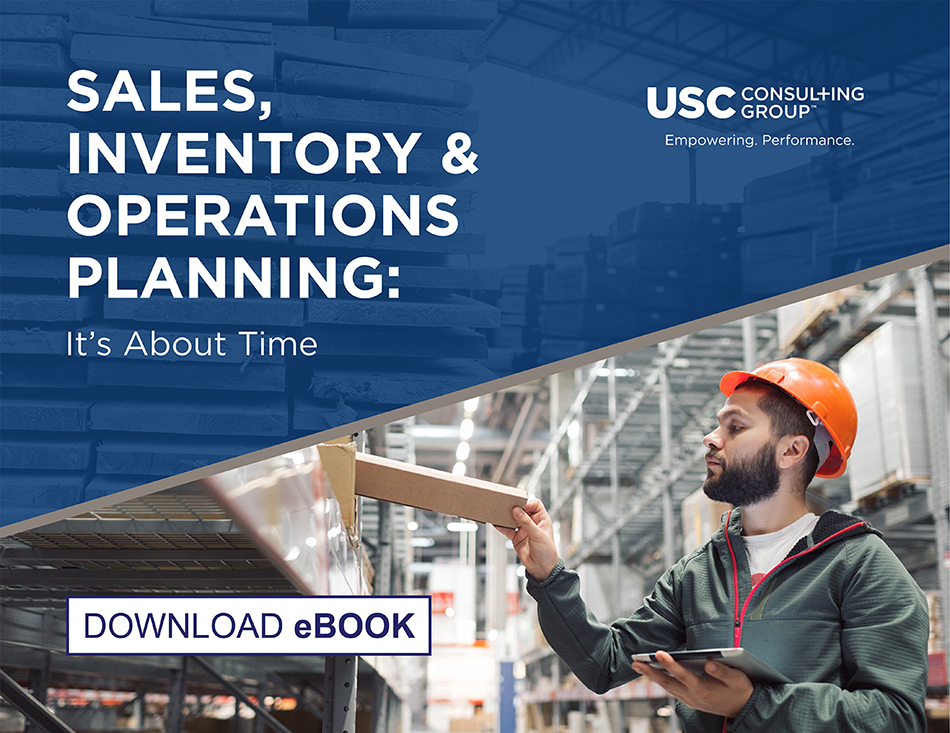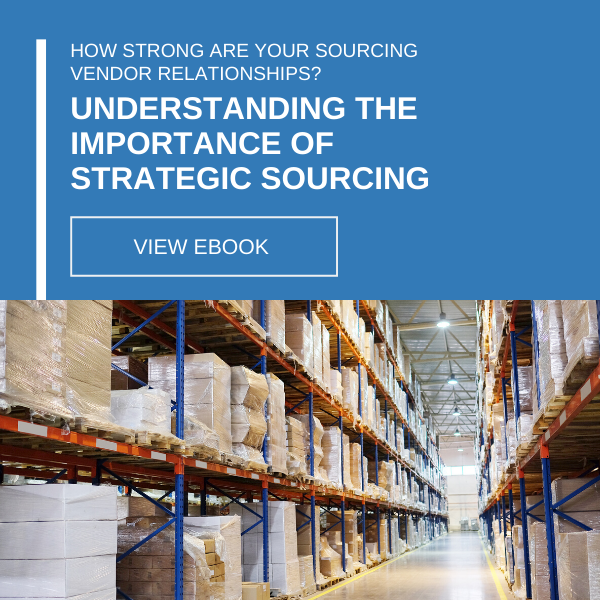-
Subscribe to Blog:
SEARCH THE BLOG
CATEGORIES
- Aerospace
- Asset Maintenance
- Automotive
- Blog
- Building Products
- Case Studies
- Chemical Processing
- Consulting
- Food & Beverage
- Forestry Products
- Hospitals & Healthcare
- Knowledge Transfer
- Lean Manufacturing
- Life Sciences
- Logistics
- Manufacturing
- Material Utilization
- Metals
- Mining
- News
- Office Politics
- Oil & Gas
- Plastics
- Private Equity
- Process Improvement
- Project Management
- Spend Management
- Supply Chain
- Uncategorized
- Utilities
- Whitepapers
BLOG ARCHIVES
- July 2024 (4)
- June 2024 (3)
- May 2024 (3)
- April 2024 (4)
- March 2024 (3)
- February 2024 (4)
- January 2024 (5)
- December 2023 (2)
- November 2023 (1)
- October 2023 (6)
- September 2023 (3)
- August 2023 (4)
- July 2023 (2)
- June 2023 (3)
- May 2023 (7)
- April 2023 (3)
- March 2023 (3)
- February 2023 (5)
- January 2023 (6)
- December 2022 (2)
- November 2022 (5)
- October 2022 (5)
- September 2022 (5)
- August 2022 (6)
- July 2022 (3)
- June 2022 (4)
- May 2022 (5)
- April 2022 (3)
- March 2022 (5)
- February 2022 (4)
- January 2022 (7)
- December 2021 (3)
- November 2021 (5)
- October 2021 (3)
- September 2021 (2)
- August 2021 (6)
- July 2021 (2)
- June 2021 (10)
- May 2021 (4)
- April 2021 (5)
- March 2021 (5)
- February 2021 (3)
- January 2021 (4)
- December 2020 (3)
- November 2020 (3)
- October 2020 (3)
- September 2020 (3)
- August 2020 (4)
- July 2020 (3)
- June 2020 (5)
- May 2020 (3)
- April 2020 (3)
- March 2020 (4)
- February 2020 (4)
- January 2020 (4)
- December 2019 (3)
- November 2019 (2)
- October 2019 (4)
- September 2019 (2)
- August 2019 (4)
- July 2019 (3)
- June 2019 (4)
- May 2019 (2)
- April 2019 (4)
- March 2019 (4)
- February 2019 (5)
- January 2019 (5)
- December 2018 (2)
- November 2018 (2)
- October 2018 (5)
- September 2018 (4)
- August 2018 (3)
- July 2018 (2)
- June 2018 (4)
- May 2018 (3)
- April 2018 (3)
- March 2018 (2)
- February 2018 (2)
- January 2018 (1)
- December 2017 (1)
- November 2017 (2)
- October 2017 (2)
- September 2017 (1)
- August 2017 (2)
- July 2017 (2)
- June 2017 (1)
- April 2017 (3)
- March 2017 (3)
- February 2017 (2)
- January 2017 (2)
- December 2016 (2)
- November 2016 (4)
- October 2016 (4)
- September 2016 (3)
- August 2016 (6)
- July 2016 (4)
- June 2016 (4)
- May 2016 (1)
- April 2016 (3)
- March 2016 (4)
- February 2016 (2)
- January 2016 (4)
- December 2015 (3)
- November 2015 (3)
- October 2015 (1)
- September 2015 (1)
- August 2015 (4)
- July 2015 (6)
- June 2015 (4)
- May 2015 (7)
- April 2015 (6)
- March 2015 (6)
- February 2015 (4)
- January 2015 (3)
CONNECT WITH US
Tag Archives: Inventory Management
There are a lot of terms used by organizations to describe their mid to long range strategic planning discipline. Whether your organization calls it Integrated Business Planning (IBP), Sales and Operations Planning (S&OP), Sales, Inventory and Operations Planning (SIOP) or something else, the key message is that abbreviations are not important – results are. Strong strategic planning discipline orchestrates sales plans, operations constraints, and financial objectives while giving guidance to short-term scheduling for execution. At USC, we call this discipline SIOP due to the strategic importance of inventory to smooth supply and demand fluctuations to maintain customer service levels.
Survey Says!
Businesses find S&OP beneficial because it helps balance supply and demand, it improves communication between sales and other departments, leads to better decision-making with everyone on the same page, and it ultimately results in better efficiency. Most organizations refer to their planning process as S&OP, but we think it’s incomplete. Inventory needs to be part of this process to unlock greater levels of operational efficiency and customer service rates.
Most companies have less than five years of experience utilizing a SIOP discipline and significantly, fewer than 50% of all companies integrate financial objectives into their monthly planning process. The result is the organization’s annual plans are disconnected from the monthly “replanning” SIOP process. Managers are typically held accountable to their annual plans which are increasingly out of date as the year progresses and better plans are known resulting in sub-optimal decision making based on old assumptions.
Furthermore, since most companies rely on static models such as Excel and Access to as their primary analytical tools, the planning process can be labor intensive, time consuming and more prone to human error. Integrating decision support systems with operations data, procurement data, inventory data, and customer demand improves simulation and scenario analysis capabilities. Integrating with advanced predictive analytics can further augment planning knowledge.
Sales, Inventory and Operations Planning
We tell our clients that SIOP is making sure you’re having the right conversations about the right things at the right time.
Sales, Inventory, and Operations Planning is a holistic process that integrates customer-focused demand plans with production, sourcing and inventory plans and results in improved tactical and long-term business decision making capability.
Keys to Implementing a Successful SIOP Process
- Everyone is on board. It’s simply not going to work if it’s not interdepartmental. You need everyone – Sales & Marketing, Operations, Procurement and Logistics, Planning, Product Development, Finance, IT, and the C-Suite working in lock step from the same plan.
- Planning cycles should be monthly. This isn’t a one-and-done process. Once you get on the SIOP treadmill, you don’t ever get off. We advise a rolling 18-month period, updated monthly. This ensures the re-planning process is looking out beyond the current budget year and for strategic planning.
- People and Process Discipline is a must. A good SIOP process includes a SIOP monthly process schedule/calendar of key events, RACIs, mutually agreed upon KPIs, actual vs forecasted reporting scorecards, assumptions and occurrences reporting, decisions made with action item follow up.
But Why the Added Focus on Inventory?
Inventory tells a story about a business’ operational efficiency. Inventory accounts pool the collective decisions and market forces affecting the company, telling stories of sales forecasting accuracy, manufacturing efficiency, planning effectiveness, supply chain disruptions, and quality control. Lean inventories reveal robust planning systems and culture, integrated ERP systems, and good governance. Excess inventories can be a short-term benefit to sustain high customer service levels during times of uncertainty, however they come with high obsolescence and carrying costs. Inventory is a strategic lever to smooth operations, procurement, and sales fluctuations. The right level of inventory is different for each company, and changes based on current consumer demand, supply chain disruptions, and strategic decisions.
Benefits of SIOP
- Gets departments in sync. The SIOP process helps to determine whether
your original financial expectations / budget, and your current sales plan and operations plan are in sync with each other. Updating your forecast monthly will show you where problems lie and provide action plans to address shortfalls. - Ensures that the plans are realistic. The key stakeholders from each department participate in formulating the SIOP plan. Since all assumptions are transparent throughout the process, each department has more time to evaluate its resources and capabilities in the context of the most recent company-wide plan. The result is a solid set of department plans that are based on latest expectations and known capabilities.
- Effectively manages change. Many industries have faced significant planning challenges in recent years. Having an agile and timely planning process helps decision makers roll with the punches. With SIOP, your business can make holistic, controlled responses to changes instead of making knee-jerk, departmental centric reactions.
- Measures performance. Our customized approach to KPIs ensures that success measurements identify where the organization is challenged and where to focus on improvement.
- Builds teamwork. SIOP gives each department an opportunity to participate in the overall planning process.
Interested to learn more about how adding inventory to your planning can make you more efficient? For more information on how SIOP can help your business read our eBook, “Sales, Inventory and Operations Planning: It’s About Time.”
*This article is written by USC Consulting Group’s Supply Chain Practice Leader, David Newman.
Effective inventory management is often a challenging task for businesses to undertake. While some factors may be similar across organizations, predicting inventory demand can vary significantly depending on the industry or business model. One of the most common problems affecting various industries is a lack of inventory visibility.
Inventory visibility issues have become increasingly prevalent with the rise of online shopping. The additional steps and expediency demands of this now preferred process can make tracking an item even more complicated. This often results in invisible inventory, where materials or products are unaccounted for in the system.
To address these issues, many companies are turning to supply chain visibility (SCV) technologies to remain competitive. These advanced systems provide real-time tracking, monitoring, and notification of each item in the supply chain. By utilizing responsive supply chains, a company can increase transparency within its inbound/outbound processes and other daily activities.
Another innovative solution is cloud-based POS systems and e-commerce management software. This technology integrates every aspect of a business for greater efficiency and offers a range of benefits. Companies can use it to track sales and customers, exercise better point of sale control, automate inventory replenishment, and generate reports with detailed analysis of gross margin ROI.
By utilizing modern technology to improve inventory visibility, businesses can stay ahead of the competition and provide better customer satisfaction. To discover strategies for staying ahead in inventory management, we encourage you to explore the resource provided below. It offers valuable insights to help you tackle this crucial aspect of your business operations.
Invisible Inventory from Celerant, a bike shop pos system company
If you need assistance with your inventory management, contact USC Consulting Group today.
Supply chain technology has come a long way in the past few years. Improvements in AI technology and deep learning programs can help supply chain managers accurately predict shortages, adapt to current conditions, and operate more efficiently.
Supply chain technology can also be used to improve the customer journey. Effective supply chain management leverages the Internet of Things (IoT) to give consumers greater control over their orders. Emerging technology can also be used to reduce human error, increase operational efficiency, and improve security.
These breakthroughs in technology improve the customer experience and ensure that consumers get the products they want when they need them.
CX and SCM
At first glance, consumer experience (CX) and supply chain management (SCM) seem unrelated. However, as senior sales executive Sven Esser points out “the relationship between CX and SCM is symbiotic.”
Esser goes on to explain that effectively mapping the customer journey is an important facet of effective CX and SCM. Predicting consumer behavior ensures that supply chains are operating as efficiently as possible and that consumers have accurate information about shipping and order fulfillment before they check out.
Esser advocates for a model of SCM that gets to know consumers and uses AI analytics to accurately map and predict the typical consumer journey. This will help businesses connect with consumers’ personal needs and help supply chain managers shift to a more “customer-focused effort.”
Businesses can use AI analytics to map the consumer journey and improve their SCM through Google Analytics (GA4). GA4 is typically used by marketers who want to improve the materials. However, GA4 can also be used to track users from the referral page to the conversion or exit page.
Supply chain managers can work with marketing to get a better picture of the consumer journey and typical behavior. GA4 can be particularly useful for businesses that use the IoT to place orders or improve CX.
The IoT
The Internet of Things (IoT) is revolutionizing industries around the world. Consumers and businesses can use the IoT to link devices and create “smart” networks between products and machines.
The IoT can also improve the efficiency of supply chains by giving businesses an up-to-date assessment of inventory and potential problems. For example, a business that runs an IoT-integrated warehouse will be aware of issues like faulty equipment and disrupted supply lines earlier than competitors who do not leverage the IoT.
IoT-integrated supply chains can improve the consumer journey directly, too. IoT technology makes it easier for customers to place and edit orders. For example, folks who utilize smart home devices like Google Nest or Amazon’s Alexa can place and edit orders with a simple voice command.
Human Error
Emerging technology like AI software and the IoT is designed to improve operational efficiency and streamline the consumer journey. However, human error still threatens to derail business operations and supply chains.
Supply chain managers can reduce the risk of human error in the workplace by automating relevant processes. This is particularly important in warehouse management, where human error may result in injury due to repetitive motions or dangerous working conditions. Automated machines in smart factories and warehouses can take humans out of the firing line and ensure that customers have their orders fulfilled with minimal delays.
Supply chain technology can also improve post-sale communication with consumers. Consumers who have ordered expensive goods want regular updates on the status of their products. Businesses can send out automated emails when the customer’s product has passed production phases and is ready for shipping. Automated communication improves the customer journey by alleviating worries about order fulfillment without derailing operational efficiency.
Operational Efficiency
Operational efficiency is at the heart of a successful customer journey. Customers can tell when all departments are working in unison and will benefit from quicker order fulfillment due to higher efficiency in the workplace.
Maximizing operational efficiency is particularly important for businesses that use Just-in-time (JIT) inventory management. JIT inventory management relies on accurate consumer forecasts and robust supply chain management to ensure that businesses get the inventory they need just when they need it. This can result in major savings, which can be passed onto the consumer or used to otherwise improve the customer journey.
However, for inventory management methods like JIT to work, businesses need to hyperautomate their operations. Hyperautomation allows businesses to “rapidly identify, vet, and automate as many business and IT processes as possible.” Hyperautomation relies on deep learning programs that can successfully capture and utilize massive data sets. This will improve the customer journey, too, as the same data sets can be used to present personalized adverts and products to consumers.
Conclusion
Emerging technology like the IoT can have a direct impact on the customer journey. Consumers today can place, edit, and receive orders using a network of machines and devices that are connected by AI algorithms. Recent upgrades to supply chain technology can also improve operational efficiency and reduce the risk of human error in factories and warehouses. This ensures that consumers receive their orders with minimal delay and at a lower cost.
*This article is written by Ainsley Lawrence. View more of Ainsley’s articles here.
The COVID-era supply chain disruptions are slowly but surely easing up for manufacturers around the globe. While the worldwide market is not yet fully recovered, signs point to a strong resurgence in 2023, with a return to normalcy by 2024. Even though good news is on the horizon for manufacturers, there are still a number of challenges to be aware of that will impact day-to-day operations. Here’s an overview of a few of the top manufacturing challenges for 2023, and how to handle them.
Challenge: Legacy technologies
Many manufacturers operate with legacy technologies — outdated hardware or software systems. These outdated systems can cause disruption for an organization in a few key areas.
The first problem: Legacy technologies can cause efficiency issues. Since these systems can be years (and sometimes decades) old, they simply don’t have the same features and capabilities of newer software on the market. Additionally, these legacy systems can pose a security risk. Older technology doesn’t have the same safeguards as newer systems, and cybercriminals have a much easier time infiltrating outdated software than one that is up-to-date.
Despite these problems, manufacturers can be hesitant to change systems due to familiarity, not wanting to enact a full system overhaul, or a mix of the two.
Strategy: Invest in new technologies and smart warehouses
Investing in emerging technologies should be a priority for manufacturers heading into the new year.
It’s a wise strategy, not only to become more efficient and protect systems from infiltration, but newer technologies can increase safety in the workplace and free up employees to handle more productive tasks. A recent survey from Deloitte found that 85% of manufacturing executives think that some form of robotics on the production line could increase employee safety, and 78% agree that updated technology can minimize repetitive work, empowering employees to focus on more productive and impactful tasks.
Challenge: Inflation
Starting in mid-2022, inflation across all essential goods prompted public backlash, not to mention squeezing the wallets of consumers and businesses alike. Bearing the brunt of the blame was the global supply chain, and the bottlenecks and scarcity it caused in markets across the world. Although those pressures are easing headed into the new year, inflation will still be a factor in 2023.
Strategy: Re-evaluate costs during design
For manufacturers, inflation means more careful planning to ensure operations remain lean, mean and profitable.
One way of doing this is by implementing Design to Cost — a method in which a manufacturer combines cost management with decision-making during the design stage of a product. Rather than the normal method of thinking about costs after a rough design of a product is made, the unit and material costs are fully integrated during planning to ensure products are profitable.
This type of thinking seems to be the reality for manufacturers in 2023, as a recent Forbes survey found that 87% of manufacturing CEOs plan to increase prices in the new year. Therefore, it’s important for all manufactures to think ahead, and integrate material costs into their design process as soon as possible.
Challenge: Inventory uncertainty
Inventory uncertainty remains one of the manufacturing challenges in 2023. Despite the healing global supply chain, manufacturers still need to strike a proper balance between stockpiling inventory and buying just-in-time. Striking that balance can be tricky. Not getting it right can cause businesses to become over- or under-leveraged at a moment’s notice — affecting the bottom line in the process.
Strategy: SIOP
Sales, Inventory & Operations Planning, SIOP, takes the normal sales and operations planning process and makes inventory just as important of a variable and a strategic tool. Following this methodology helps manufacturers eliminate waste, increase efficiencies and achieve an optimal level between not enough and too much.
We recommend that the SIOP horizon be a minimum rolling 14-month period that gets updated monthly. The aim is to look ahead multiple quarters to make sure inventory is available exactly when you need it. Involving a wide range of departments such as sales, marketing, engineering and finance, SIOP is a system that involves the entire organization to ensure yearly goals and objectives are met.
If you would like to learn more about SIOP, download our (free) eBook, “Sales, Inventory & Operations Planning: It’s About Time.”
Keep moving forward
There will be manufacturing challenges in 2023 and beyond. By addressing your legacy technologies, adjusting to inflation fluxes, and taking the uncertainty out of your inventory management, you will be able to fine-tune your operations for optimal performance.
If your business could use some horsepower to power up your team on improvement initiatives, contact USC Consulting Group and we will put our over 50 years of experience to work for you.
Supply chain analytics refers to the collection of data and information that provide insights into logistics performance, from inventory management to fulfilling and shipping orders.
How Data Analytics is Changing the Supply Chain Landscape
The ever-increasing reliance on big data is altering the landscape of supply chains as we know them. Historically, the majority of supply chain management was dependent on intuition and experience. However, with the introduction of powerful data analytics technologies, supply chains are now guided by data-driven decision making.
The ever-increasing availability of data is driving this transition. Previously, data was dispersed across numerous silos inside a business, making it difficult to provide a comprehensive perspective of the supply chain. Organizations, on the other hand, may collect and store data from all areas of the supply chain in one central location owing to data warehouses and data lakes. This enables supply chain managers to see the entire picture and make data-driven decisions to increase efficiencies and performance.
The rising availability of strong data analytics tools is another factor pushing the change to data-driven decision making. To examine data in the past, supply chain managers had to rely on manual procedures or limited software tools. However, a wide range of powerful data analytics technologies is now available to assist managers in making sense of massive data sets and uncovering hidden patterns and trends. The transition to data-driven decision making is reshaping the supply chain landscape and has far reaching implications for how businesses function.
Organizations may improve the efficiency and performance of their supply chains by leveraging the power of data, providing them with a competitive advantage in the marketplace.
The Advantages of Data Analytics in Supply Chain Management
Data analytics can aid in the smooth and effective operation of supply chains. Supply chains can uncover patterns and trends in past shipments by examining data from previous shipments. This can help them minimize disruptions and stock-outs while also improving inventory management. Furthermore, data analytics can assist supply chains in optimizing their routes and schedules, as well as tracking their success over time.
Here are some of the primary advantages of employing data analytics in supply chain management:
- Reduced Inventory Costs
- Optimized Production Plans
- More Efficient Cargo Shipments
- Reduced Risks
- Cross-Functional Cooperation
Check out the following infographic by 2Flow which takes a deep dive into ‘Analytics In The Supply Chain’.
Supply chain analytics are guiding managers into the future with data-driven decision making. If you need assistance properly analyzing your data and setting up your supply chain management for success, contact USC Consulting Group today.
Yes, it’s that time again. The holiday season is around the corner and it is time for manufacturers to start preparing now.
Most holiday sales will come from online shopping, adding stress to supply chains and the warehousing industry. With proper management, it’s possible to plan to sustain efficient operations despite volume increases and demand.
Managers can analyze the warehouse itself and equip employees and equipment with the necessary tools to make it through the season. What techniques work and what should warehouse managers prioritize among their already lengthy to-do lists?
Preparing Warehouses for Increased Inventory
It’s time to walk the warehouse and analyze the state of everything. Is it already almost bursting with regular inventory, or is there clutter in the walkways? How much space could the warehouse reappropriate for enhanced storage solutions? What maintenance should be conducted to help bear the load of surplus inventory, spatially and financially?
Work with your logistics team on this walkthrough, which should happen long before the holidays hit, to allocate enough time to make renovations or install new structures. Rethinking the floor plan can reveal space optimizations and efficiency modifications, such as more efficient routes for workers and automated machines to pack expediently.
Countless systems and programs can help automate and streamline previously complicated inquiries and tasks, including:
- Implementing scheduling software to help employees trade shifts or sign up for overtime.
- Setting up cameras and other monitoring systems to check everything from maintenance to productivity.
- Choosing the optimal warehouse management system to keep tabs on inventory.
- Collaborating with relevant members of the supply chain with cloud-based blockchain tech, keeping communications open in case of delays or changes.
Your tech stack – the tech that synergizes to make your company run seamlessly – should receive adequate maintenance to ensure technology isn’t the reason for outages or stops in production. Suppose your warehouse does not have any or just a few of these technologies. In that case, this may be a time to invest, because they are long-term solutions that will continually provide benefits outside of the holiday season.
This is the prime time to reflect on the strategies that worked in the previous holiday seasons and what could be improved. Interview the workers to gather perspectives from those who were in the fray last time inventory demand was at its peak.
Readying Workers for Increased Demand
The topmost priority is ensuring the warehouse has enough staff to handle the holidays. It’s helpful to analyze analytics and demand forecasts from the past to make accurate assessments of staffing needs. This will ensure incoming and tenured staff feels supported by the company if they know management gives proper attention to employee well-being and workload distribution.
This doesn’t only include floor staff – extra hands in payroll and human resources to help with scheduling will probably be necessary. They must be equipped with the right resources to adjust for fluctuating employee numbers throughout the holiday season.
Do not resort to increasing hours to adjust for long days, as this will cause turnover and burnout, potentially leaving the success of your holiday season – and after – in jeopardy. It’s vital to prioritize retention during this time, as seasoned staff members can assist with helping seasonal entrants acclimate more quickly to the working environment.
Providing training beforehand will instill accurate expectations for work hours – which could extend past the holiday season due to potential returns – and holiday wages.
On top of having adequate staff is training existing and upcoming staff to mentally and physically prepare them for volume. This combines with informing staff of any changes made to the warehouse, including program updates and organizational shifts that will help efficiency. For mental preparation, ensure employees have access to resources to manage stress to help keep productivity level.
Equipping Shipping Fleets for Holiday Weather and Traffic
Safety is paramount when it comes to holiday shipping. Fleets must be ready to take on the climate shifts in the region while making deliveries on time.
There are plenty of ways to ensure the warehouse’s fleet can withstand holiday conditions. Vehicle maintenance will not only save money by keeping vehicles healthier, longer, but also save on potential injuries in the workplace by keeping employees safer. With hundreds of thousands of fleet vehicles preparing to travel for peak season, it’s also about keeping everyone else on the road safe.
Checking brake pads, tires, and windshield wipers are inexpensive and basic improvements on top of more complex modifications like stronger batteries.
Provide employees with training to know what precautions to take on the road. They must receive as much training as warehouse staff to communicate about and acclimate to unexpected holiday situations. Are they aware of alternate travel routes or how to react in a severe storm?
Warehouses must prep the fleet with insurance and real-time locating system (RTLS) technologies. Especially since the holidays provide the most intensive time crunch of the year, knowing how well your current shipping system is meeting expectations can help you make adjustments along the way to improve efficiency.
It also provides the warehouse and customers with peace of mind, knowing their packages will safely make it to their houses.
Warehouses Prepare for the Holiday Season
Though the holidays can feel overwhelming for anyone in consumer industries, it’s possible to deal with the work gracefully. These timeless strategies allow warehouse managers to find improvements and discover the tactics that genuinely make a difference.
Making necessary adjustments to your warehouses, training employees, and creating safe shipping environments will also reinforce strategies to use in subsequent seasons.
* This article is written by Devin Partida. Devin is a tech writer with an interest in the IIoT and manufacturing. She is also the Editor-in-Chief of ReHack.com.
Are you always putting out fires? Not in the literal sense, of course. We’re talking about operational problems that pop up at the most inconvenient times. Once you take care of one issue, two more seem to appear in its place. Issues such as:
- Machines break down
- Workers calling in sick
- Human errors
- Backups and bottlenecks
- Inventory uncertainty
If you’re busy troubleshooting today, it’s hard to focus on improving tomorrow. Opportunities for growth can be missed.
Get ahead of problems before they catch fire by watching this video:
At USC Consulting Group, we’ve been helping clients for over 50 years to implement strong Management Operating Systems that assist them with breaking that firefighter mentality.
The best management operating systems center around four main components:
- Processes
- Systems
- Roles
- Structures
A well-designed MOS will have your company operating like a well-oiled machine, making your bottom line stronger and your operations more efficient.
So put down the fire extinguisher and enhance your management operating system today by contacting USC Consulting Group.
Phone: +1-800-888-8872
Email: info@usccg.com
Learn more about the benefits of an effective MOS in our article How Can A Management Operating System Help Your Organization?
Like most industries today, the building products industry is faced with a host of challenges. These uncertain economic times aren’t helping matters any. Here are some of the top challenges we’ve identified, and tactics to combat them.
Challenge #1: Post-COVID demand
As the tumultuous start to the decade began to ease back into normalcy, the industry saw an increase in consumer spending and a boom for the construction and building products industries. What was behind it? Potential customers had time to sit and think. A year or more of being involuntarily secluded in their homes put their current infrastructure to the test. Who thought that kitchen countertop was a good idea? Wouldn’t it be nice to open the wall up and put in a breakfast bar? And… while we’re at it, let’s install that screened-in porch to go with it. The projects consumers had been thinking about for months were finally able to be realized and construction started up again with a vengeance.
Great! But building products manufacturers have been struggling to meet this ever-growing demand.
Strategy: Don’t turn down work — extend your lead time
Many of our clients have more work than they can handle right now. While it may seem unrealistic to take on every project in sight, it’s important to shore up your bottom line that took such a hit during the pandemic. Extending your lead time by a few weeks will allow you to accept more jobs and keep business flowing.
Challenge #2: Supply chain bottlenecks
A post-COVID boom is great for business — until you can’t get the materials you need at a price that makes sense. Supply chain disruptions have been commonplace for a few years now and that disruption is touching nearly every industry imaginable.
The pandemic showed just how vulnerable the current state of the supply chain is across the globe. From shipping and transportation delays to factory disruptions and material shortages, it has never been more important to keep a close eye on where and how you are sourcing your materials.
Strategy: Implement SIOP to keep a careful watch on your inventory
Being mindful and proactive about your inventory is the best way to make sure you have the materials you need, when you need them. We are helping many of our clients implement Sales, Inventory and Operations Planning (SIOP) to do just that.
SIOP is a process that facilitates having the right inventory conversations at the right time by integrating customer-focused demand plans with production, sourcing and inventory. Using this method, companies can get a clearer look at their operations and create better-informed strategy decisions.
Read more about SIOP in our eBook, Sales, Inventory & Operations Planning: It’s about Time.
Challenge #3: Rising Costs
We get it. This problem is everyone’s problem these days. Despite the already razor-thin profit margins in the building and construction industry, material prices continue to rise across the board. Your business isn’t operating for free, and finding ways to complete projects under budget and stay profitable is proving to be a harder challenge with each passing quarter.
Strategy: Include an escalation clause in your contracts
There are a few strategies you can employ to combat rising costs, but each has its pros and cons. Should you finance material purchases? Raise your prices? Will these strategies help your bottom line, or will it cause customers to look elsewhere?
Ultimately, the wisest strategy seems to be including an escalation clause in your contracts, stating that if prices increase by a certain percentage or more during the duration of the project, you have the right to adjust your costs accordingly. This provides the most flexibility for your business without risking losing customers to cheaper alternatives.
At USC Consulting Group, we’re here to help you through these uncertain economic times. And the good times, too! If you’d like to learn more about these common industry disruptors and our solutions, download our free eBook, “Constructing the Building Products Industry: An Outlook of Challenges and Solutions.”
Slowly but surely, consumers are returning to the marketplace in full force after a number of tumultuous years. According to Industry Week, consumer spending is up 20% from this time last year. While that number is great for a manufacturer’s balance sheet, there are still challenges in the industry that are keeping CEOs up at night. Here is a look at a number of concerns of top executives — and ways you can tackle them head-on to get a good night’s sleep.
Problem: Retiring workforce
Ah, retirement. The day valued, longtime employees get their gold watches and leave the plant for the last time. It’s great for the employee, not so much for their CEO. That’s because as retirees head out to enjoy their golden years, they’re taking all of the institutional knowledge they’ve learned over many years on the job with them. The median worker age as of 2018 was 44.1 years old — over two years older than workers in other industries. And that was in 2018, the most recent stat. Those folks are 48 now. But you don’t need stats to tell you that. A walk around your shop floor (or a talk with HR) will give you the lowdown on how many of your employees are nearing retirement.
Solution: Capture that knowledge
It pays to be proactive in most situations and this is one of them. Capture that institutional knowledge before your seasoned vets walk out the door. Create mentorships between older and younger workers. Film a roundtable discussion featuring your best older workers talking about the ins and outs they’ve learned over the years. Ask your seasoned vets to be part of updating your manuals. At USC Consulting Group, when we go into a manufacturing business to improve efficiencies, we understand that the people on your front lines are your greatest resource and our greatest ally in that effort.
Problem: Skills gap
The other side of the institutional knowledge coin is the lack of skilled workers to replace them. You’ve heard about the skills gap, certainly, and this is it. There is a dearth of qualified people out there. Or enough people. Manufacturers in the U.S. are expected to see 2 million unfilled jobs by 2030. It paints a grim picture for companies that aren’t planning or prepared for the future of their workforce.
Solution: Training
If you’re not finding skilled people, one solution is to create robust training programs that will get them the skills they need. It’s an investment, yes. But a worthy one.
Another tactic: Partner with a local trade school or community college to target upcoming grads.
Problem: Employee engagement (or lack thereof)
Are your employees happy? Do they feel valued and appreciated? If you don’t know, now’s the time to find out. To add to the problem of an aging workforce retiring and taking their skills with them, the new generation of warehouse and manufacturing workers are less and less inclined to begin and continue careers in the industry. The Great Resignation is a countrywide juggernaut that has prompted many of the younger workers to resign from and reject positions where they don’t feel adequately fulfilled or see a future career. The manufacturing industry is not immune.
The younger generation of workers needs validation and appreciation to stick around. Only 36% of U.S. employees are engaged at work and 74% are actively looking for a new job at any given time with their current employer.
Solution: Start walking the floor
Walking the floor is an oft-overlooked yet crucial way for managers and executives to engage with their team, foster relationships and directly affect employee retention in a positive way.
Getting out onto the shop floor shows employees that their employer cares about them and their career. For the employer, this strategy fosters retention while also affording an opportunity to discover any standout employees or ways to improve day-to-day operations. This directly combats an aging workforce by keeping new employees around long enough to become skilled themselves.
Another tactic: Invest in career pathing for your employees. It starts with promoting from within and giving people a roadmap for how to get there. It’s a powerful tool. In fact, 94% of employees said they would stay at a job that invested in their career development, according to a survey on LinkedIn.
Problem: Worldwide supply chain disruptions
While the COVID-19 pandemic has slowed down, the manufacturing problems it caused are still very prevalent in the industry today. Bottlenecks in every level of the supply chain and overcrowded shipping ports have become the norm over the past few years — with little signs of slowing.
According to Industry Week, a 400% increase in shipping costs from China and a 45% increase in ocean freight wait times — both increases relative to last year — is a trend that could continue for 6 to 12 months, if not longer.
Solution: Reshoring
Reshoring has long been suggested as idealistic and beneficial for the country, yet unrealistic. That is, until now.
The dramatic increase in outsourcing costs and interminable shipping wait times has resulted in many Fortune-500 companies — General Motors, Toyota and Samsung, to name a few — making considerable investments in the improvement, expansion and new developments of their manufacturing plants in the U.S.
Reshoring is a way for U.S. manufacturers to invest in the country and claim valuable subsidies, while also shielding themselves from any potential global supply chain issues.
Problem: Inventory management
Dialing in proper order quantities, reorder triggers and keeping an accurate and adequate lead time have long been hot buttons for manufacturers. The aforementioned bottlenecks and disruptions have not helped.
The issue compounds when all departments have a different viewpoint on the situation: operations, sales, finance and business executives can all have contrasting requirements and best practices when it comes to an inventory management philosophy. Any divergence in departmental expectations mixed with a lack of communication can spell disaster for any manufacturer.
Solution: SIOP
SIOP expands on S&OP — the business management process that involves sales forecast reports and planning for demand and supply — by adding a crucial component: Inventory.
SIOP is a powerful tool that helps your company get departments in sync, ensures that everyone is on the same page and realistic about the process, helps you manage and roll with changes, and measures performance.
“A key to SIOP is to emphasize inventory as a strategic tool to help offset variation in either demand or production issues,” explains David Shouldice, Senior Vice President and Managing Director at USC Consulting Group. “One lever of control in the SIOP process is to make inventory harder working as a strategic tool.”
SIOP helps you wrangle your inventory management, achieve the optimal balance between not enough and too much, and settle back into Lean manufacturing principles that can eliminate waste and help ramp up your efficiency.
These aren’t the only challenges keeping CEOs up at night. At USC Consulting Group, we have more than 50 years of experience helping manufacturers find opportunities for greater efficiency and productivity. Call us today to talk about how we can help you get a good night’s sleep.
Warehouses are at the core of order fulfillment. The quality of your delivery can only be as good as the extent of your warehouse’s efficiency. If you are not running a tight ship at the warehouse and making each second count, you will have difficulty with receiving inventory in time, shipping your order as per customer expectations, extracting optimal worker productivity, and managing your costs.
The faster things move at the warehouse, the happier your customers will be and the lower your costs become, all of which feeds back to more growth for your business. Here are some practical time-saving tips that can help you get the most out of your warehouse.
1. Set Aside Space for High Volume Product
Different products will have different levels of order volume. Many times, products will follow the 80-20 principle. The majority of deliveries will involve just a couple of products. Instead of giving equal treatment and space to all products, it would be more efficient to allocate warehouse space and other resources in line with order volume.
If you are running warehouse management software, you can access reports that show you the products that comprise the majority of orders. Next, set aside a section of the warehouse for your high-volume products that would allow your staff to process orders with minimal distractions. No need for them to move back and forth past stretches of low-volume products in order to reach the high-volume items.
Ideally, this high order volume section should be nearest to the packing stations so your pickers are walking shorter distances per order. If you’re using dynamic slotting, consider adding extra physical space around these shelves to accommodate shifting patterns of greater traffic.
2. Organize Workstations and Layout for the Workflow
Setting aside dedicated space is not the only way the arrangement of your warehouse can help cut down processing times. Think about inventory receipt and customer order workflows when determining the layout and the arrangement of workstations at the warehouse. Minimize the amount of time workers spend looking for tools, reaching out for equipment or handing orders to the next team by ensuring employee workstations are positioned near the resources, departments and vendors they work with.
Workstation organization also helps reduce clutter, minimize errors, lower inventory loss, break bottlenecks, slash pick-up times, maximize storage use, enhance safety and strengthen the overall organization. Yes, that’s a lot. But if you doubt any of those claims, it’s time to reorganize your picking stations.
3. Leaner Inventory
Lean inventory is not just a good strategy for manufacturing. It is just as important for warehouse operations. Aside from space, cost, and cash flow benefits that come with maintaining only as much product as you need, there are time savings as well.
Think about the time it takes to work your way around a warehouse with thousands of boxes compared to one with hundreds. Leaner inventory ensures you can get to what you need quicker and have the product out the door faster by minimizing the distances staff have to move to process orders. The difference of dozens of seconds or a couple of minutes may not seem much on its own but these micro-savings quickly add up in the grand scheme of performance.
While an industry-wide best practice before COVID, we now see some threats here. So the new lean goal is to have enough product to fill orders through the longest lead time you’ve experienced for a resupply.
4. Automation
Human error and fatigue are key barriers to timely fulfillment. The lower the degree of human intervention in the process, the higher the capability to fulfill orders in good time. Automation here would be in both mechanical and software form. You could, for instance, install a conveyor belt to speed up the process of moving items from one section of the warehouse to another.
Invest in warehouse management software as well that enables both high-level and detailed views of warehouse activity and inventory in near real-time. Such systems also enhance efficiency by identifying the most ideal methods and routes for fulfillment. They can send out automated notifications to smartphones and other mobile devices thus cutting down the time it would take to manually distribute pick lists.
5. Plan for Reverse Logistics
The warehouse is not all about receiving fresh inventory from manufacturers/distributors and sending out products to customers. As long as the warehouse is aiding the fulfillment of online orders, there will be returns when a customer finds that the product was not as per their expectation. There will also be recalls due to defects as well as returns from end-of-life products.
Known as reverse logistics, this process can introduce hurdles if not well managed even if your outbound process is working seamlessly. Everything is, after all, happening under the same roof so inefficiencies in reverse logistics will inevitably affect the time you dedicate to outbound fulfillment.
Address reverse logistics by developing effective intake, repair and/or recycling mechanisms for returns. Set aside space to inspect returns and determine whether the item should be placed back in inventory, repaired, recycled or disposed of at a discount.
6. Review Performance Regularly
Warehouse activity will not remain at the same level all year. For instance, the products classified as high volume won’t necessarily be static. It is possible for you to have a different set of products at a high volume at the end of the year compared to the beginning of the year. Regularly evaluate your warehouse operations and explore ways of making the process more efficient.
If you do not regularly review activity and performance, what may have been set up to improve efficiency may gradually become a barrier to maximizing time savings. By identifying emerging inefficiencies, you can make changes as and where needed to make things better.
Identify and set key performance indicators that become benchmarks for your routine reviews. Make adjustments when performance falls below the desired target including applying new ideas for inventory management.
Wrapping Up
These tips for improving warehouse efficiency are relatively straightforward. Some of them such as planning the layout and setting aside space for high order products require hardly any investment to do. Get all these six right and observe your warehouse efficiency rise as turnaround times fall.
*This article is written by Jake Rheude. Jake is the Vice President of Marketing for Red Stag Fulfillment, an eCommerce fulfillment warehouse that was born out of eCommerce. He has years of experience in eCommerce and business development. In his free time, Jake enjoys reading about business and sharing his own experience with others.

